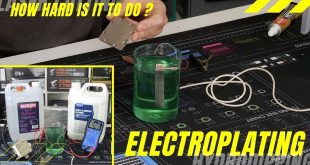One of the most powerful additions to the arsenal of a formula one team is the ability to come up with a novel solution to an engineering problem and then print it out. But what if you could do the same with human organs? KitGuru ponders the possibility of low cost, substitute ink cartridges with horse DNA.
At the KitGuru offices, we see a lot of amazing stuff. half a terabyte of memory in a small USB pen drive, desktop workstations with 32-thread capability and arrays of SSDs that can move the 4.7GB contents of a DVD from here to there in under 2 seconds.
So what does it take to amaze us?
The work of Dr Will Shu for a start.
This biofabrication guru started life in China, but received his Ph.D. from Cambridge and has been published more times than a u-turn-laden manifesto. When he's not lecturering junior gurus in Microengineering at Heriot-Watt University in Edinburgh, he's off gallivanting with the smart folks over at Stanford.
More recently, he's turned his attention to the challenges involved in printing living tissue.
One of the toughest problems is how to get the individual parts to come together in realistic groups – rather than being printed flat, like a sheet of paper.
He has now proposed a ‘blob printing system' that will have greater structural integrity.
We're imagining fish eggs or caviare – where blobs of material can coalesce in strange and unusual ways.
The real trick, according to Dr Billy is how to retail a cell's pluripotency – in other words ‘Will stem cells printed this way still be able to form anything they want – or will that functionality be impaired by the printing process?'
.

>
KitGuru says: To give you an idea of how fast this technology is developing, it was only 10 years ago that Professor Nakamura came up with the basic concept – and 6 years later he had a rudimentary bio-printer. By 2010, simple blood vessels had been synthesised and now the step forward by Dr Bill could help accelerate development faster. First organs likely to be printed? Kidneys. Expect artificial hearts by 2035.
Comment below or in the KitGuru forums.
 KitGuru KitGuru.net – Tech News | Hardware News | Hardware Reviews | IOS | Mobile | Gaming | Graphics Cards
KitGuru KitGuru.net – Tech News | Hardware News | Hardware Reviews | IOS | Mobile | Gaming | Graphics Cards


